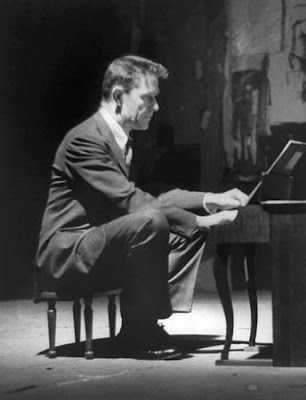
John Cage was a revolutionary man, an experimental "composer" and the artist that altered the world of music and the relationship between (what we call) music and our lives. Cage is known best from his 1952 composition, 4'33", a musical performance, always lasting exactly 4 min. and 33 seconds, which consists of musicians pursed in position to play the first note on their instruments, which never comes.
He was also known as a philosopher, poet, music theorist, artist, printmaker, amateur mycologist and mushroom collector. He challenged and questioned the idea of music as a form of self expression and of sounds being anything more than just that, reverberations affecting our ears and interpreted by our brains. He talked about the sounds not created with force or forethought and the beauty within "silence".
In an interview with Laurie Anderson (an artist that I will be sure to talk about later) he states; "I use chance operations instead of operating accordingly to my likes and dislikes. I use my work to change myself and I accept what the chance operations say."

While I do not 100% agree with everything that Cage felt music should be, I see his impact on our culture and the creation process of musicians as incredibly significant. He was a true genius; taking an entire discipline and turning it on its head.
Finally I will leave you with the composition, Dream--written to accompany a Merce Cunningham dance--which I find serene and elegant, and also a closing quote for contemplation;
"There is no such thing as an empty space or an empty time. There is always something to see, something to hear. In fact, try as we may to make a silence, we cannot."

No comments:
Post a Comment